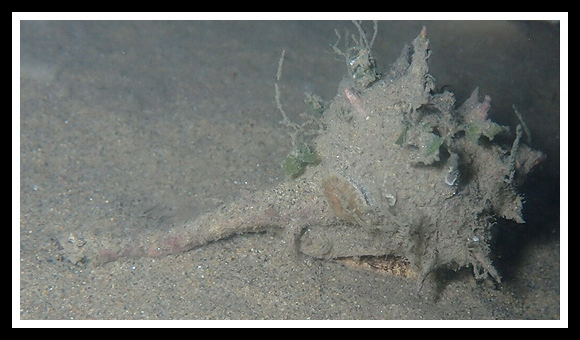
Galicia to Morocco, Canarias (Lanzarote), Mediterranean. On sandy or silty grounds, more uncommonly on rocky bottoms, from shallow subtidal to continental shelf, with a marked drop of the concentration below the photic zone limit. Predator on shelled mollusca. Basionym: Murex brandaris.
In shallow sands at night, L’Espiguette, Le Grau-du-Roi, Provence, S. France. Original picture provided by S. Le Bris for iNaturalist – (CC BY-NC).
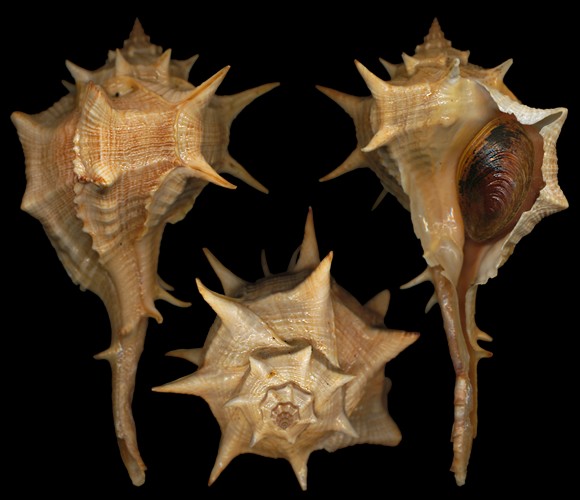
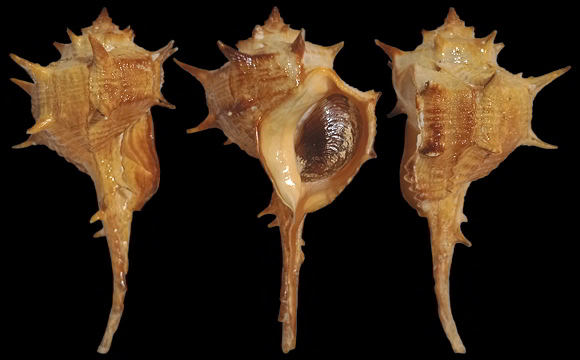
A synonym is clavisherculis. In nets, Marseille, Provence. 72mm. E. Vial legit (FR).
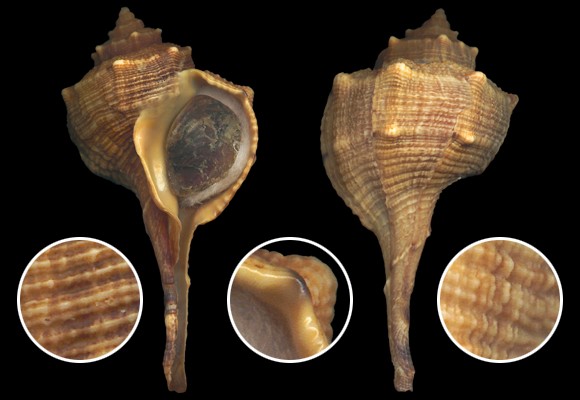
Other forms are aculeata, adunca, delicatula, diplacantha, intermedia, nivea, nodosa, robusta…
Variant “rudis”, 15m deep, Rompiente, la Carihuela, Málaga, Andalucia, S. Spain. 69mm.
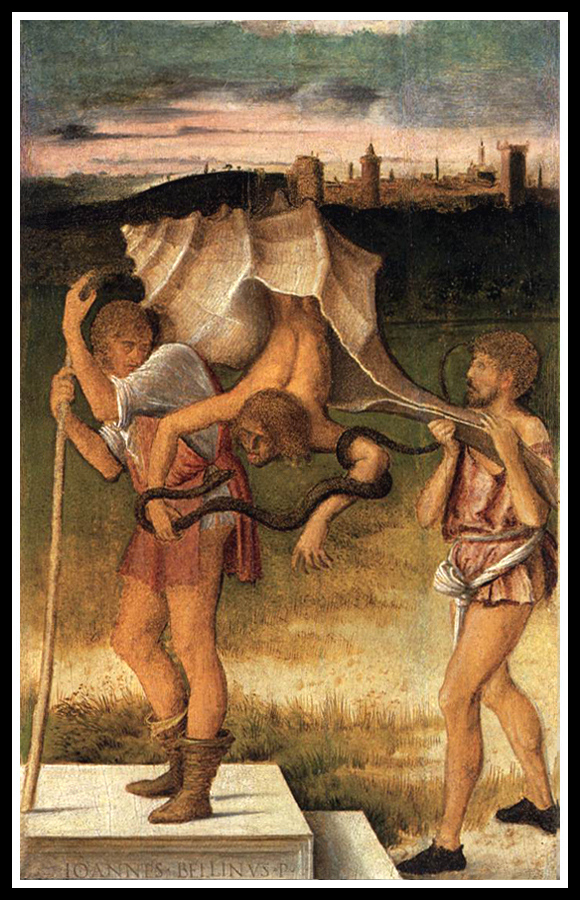
The word “bolinus” refers to a bowl, and most probably to these terracotta pots in which nested the doves, from the Middle Ages to the early 20th century. In french, the word is “boulin”; in Adanson’s work about the african Bolinus cornutus, the word becomes “bolin”.
Above, a painting by Giovanni Bellini, made around the year 1490, time in which the artist worked a lot for venetian churches and on religious or ethical topics. La Menzogna, or Falsità, shows a human, sinuously exiting the shell of a Bolinus. The conch, which itself can be considered as a megaphone (cf. the common use of a Charonia), is brandished by the aggressor on the right, while the victim of the calomny is at left, on a kind of pedestal. The difference in the quality of the costumes could suggest a difference in the level of virtù, if we can just imagine some virtù in the calumniator.
Above, a painting by Giovanni Bellini, made around the year 1490, time in which the artist worked a lot for venetian churches and on religious or ethical topics. La Menzogna, or Falsità, shows a human, sinuously exiting the shell of a Bolinus. The conch, which itself can be considered as a megaphone (cf. the common use of a Charonia), is brandished by the aggressor on the right, while the victim of the calomny is at left, on a kind of pedestal. The difference in the quality of the costumes could suggest a difference in the level of virtù, if we can just imagine some virtù in the calumniator.
Original picture provided by Archaeodontosaurus for Wikimedia Commons – Public Domain.
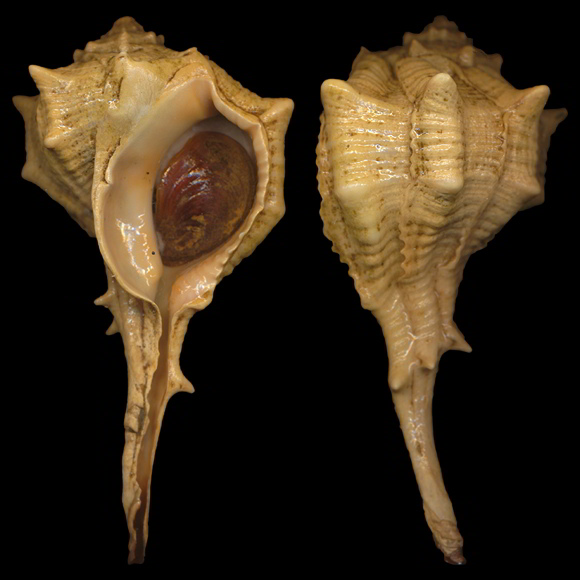
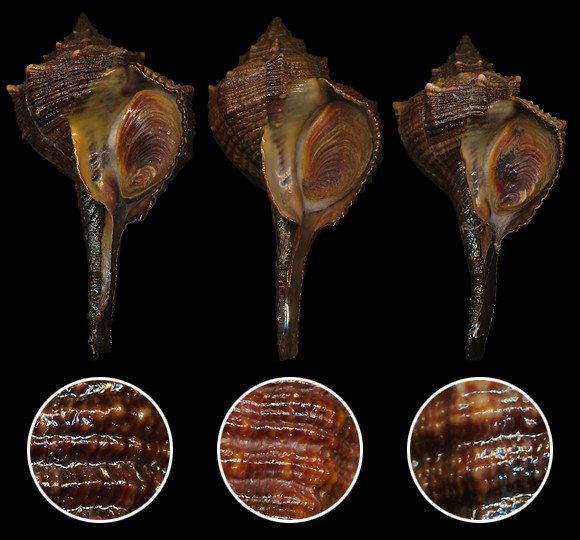
7-8m deep, on mud, lagoon of Santa Gilla, Cagliari, S. Sardinia. 62-65mm.
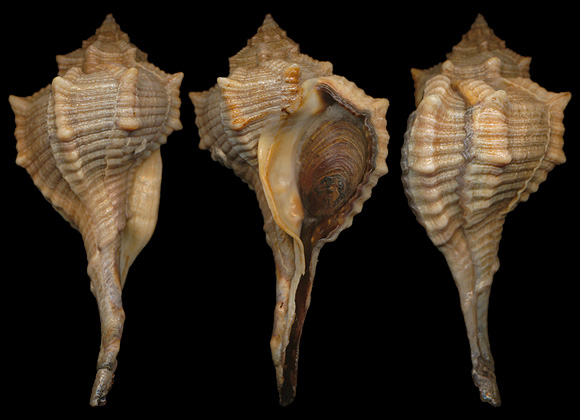
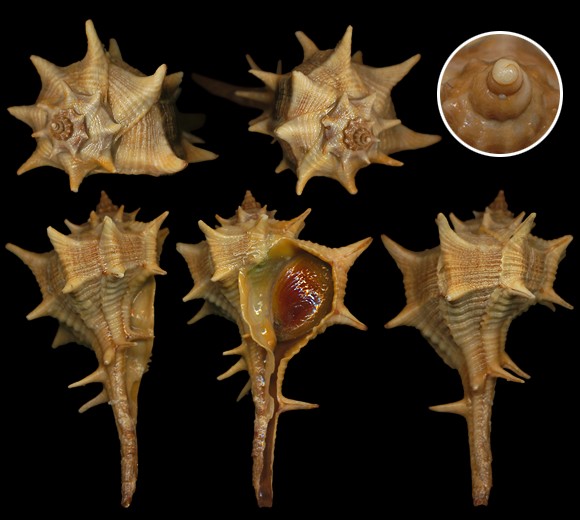
Named “purpura” by Pliny the Elder (Naturalis historia lib. IX, chap. lx & lxi) for its purple dye. « Alterum [species that gives this dye] purpura vocatur, cuniculatim procurrente rostro, et cuniculi latere introrsus tubulato, qua proferatur lingua [with a length of one finger: “longitudine digitali, qua pascitur perforando reliqua conchylia” etc.]. Praetera clavatum est ad turbinem usque, aculeis in orbem septenis fere… »
Pretty specimen fished along Spinalonga coast, at 100-500m north of the dam, Elounda lagoon, NW. of Kolpos Mirabellou, Lassithi, N. Crete. 55mm.
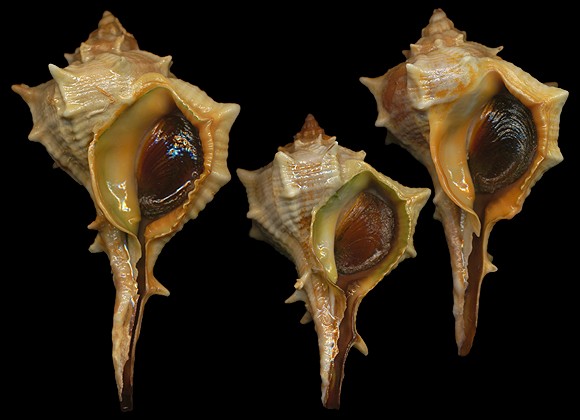
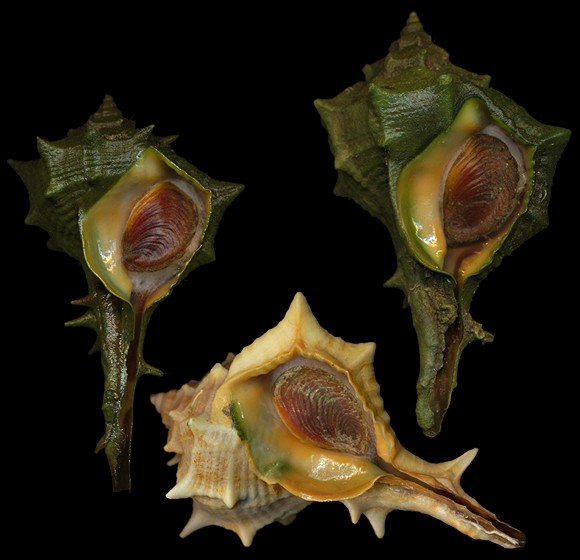
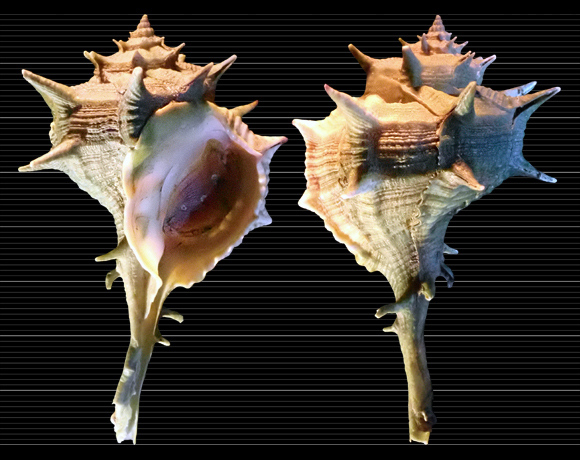
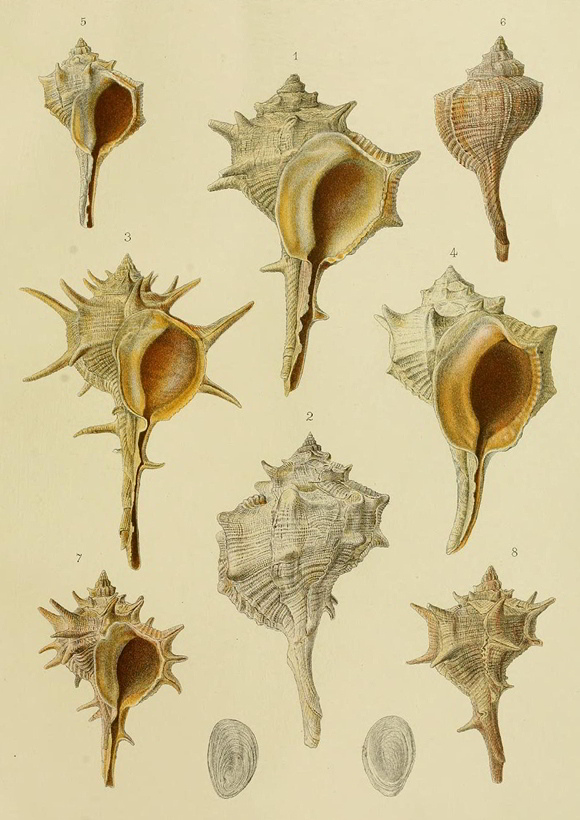
text and plate, Cassel 1887.
« Texta [sic] subclavata, spira mediocri, in caudam elongatam, inferne leviter recurvam attenuata, sexfariam varicosa, varicibus rotundatis, appressis, spinis acutis canaliculatis in series duas dispositis, serie infera interdum duplici, armatis; cauda serie tertia spinarum cincta. Anfr. 7 angulati, sutura distincta ad varices interrupta discreti, spiraliter irregulariter lirati, cauda apicem versus laevi. Apertura ovata, in canalem parum longiorem desinens, labro crenulato, faucibus laevibus, lamella columellari soluta, concave valde erecta. Albido-cinerea, apertura lutescente, interdum vivide aurantia. »
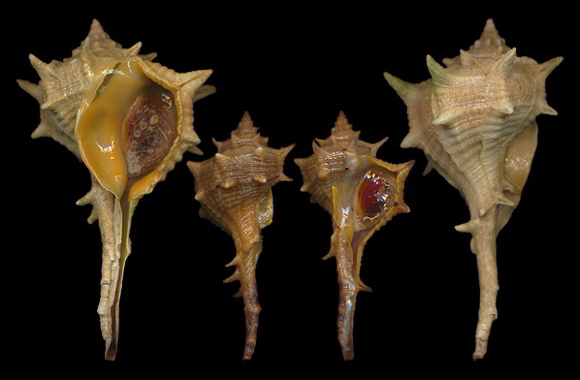
« …apertura lutescente, interdum vivide aurantia »: shallow water specimens from Greece. The paler one (72mm) was collected on sediments at 6m deep, Vouliagmeni marine lake, west of Perachora, Loutraki area, N. Korinthia. The darker one (54mm) was caught in net, off northern Navplio muddy shallows, by a boat based at Nea Kios, Argolida. In Mediterranean, the species reduces in size from west to east: the largest specimens come from Morocco, the smallest from the levantine coasts.
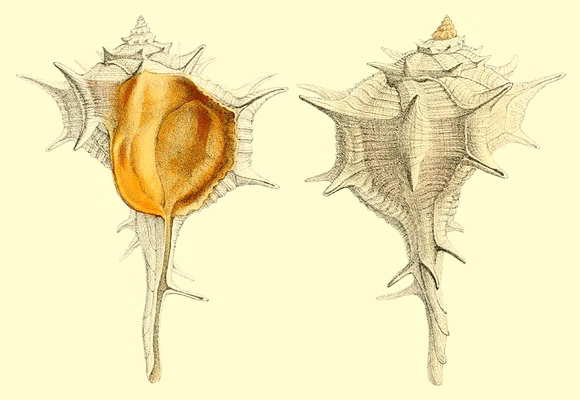
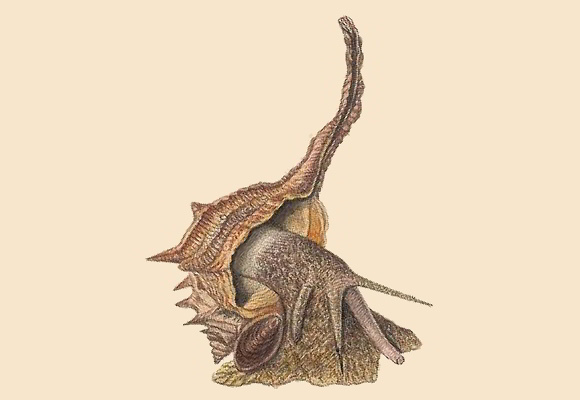
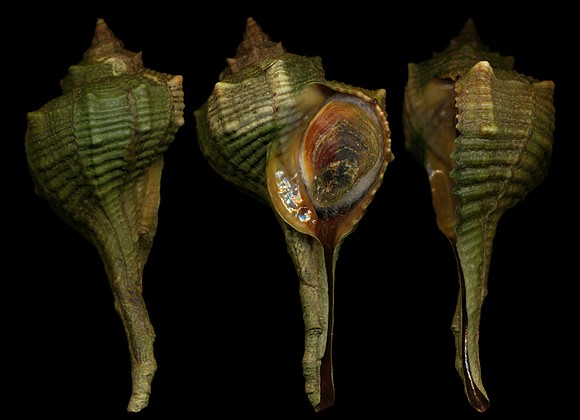
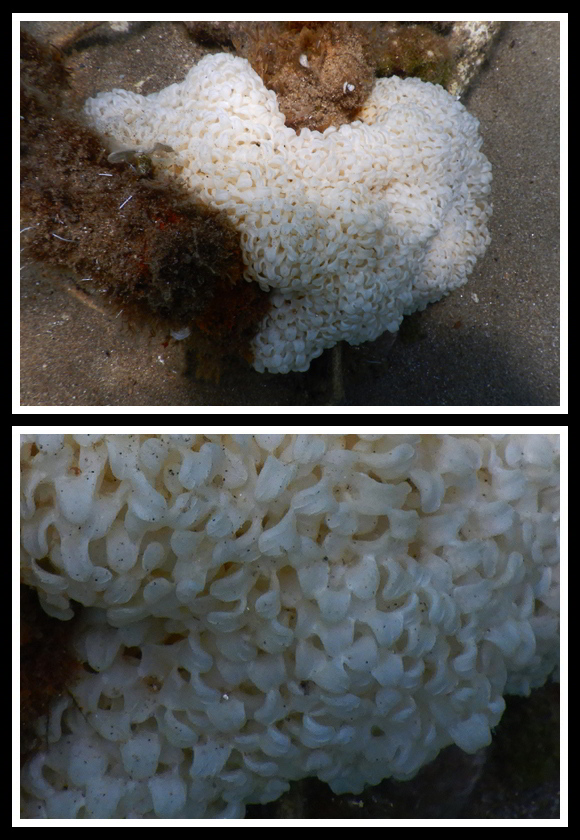
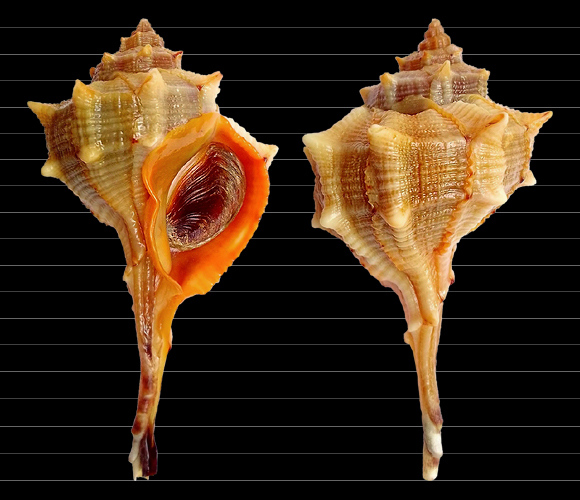
Original pictures provided by Y. Mollaoğlu (TR).
– (CC BY-NC-SA) –
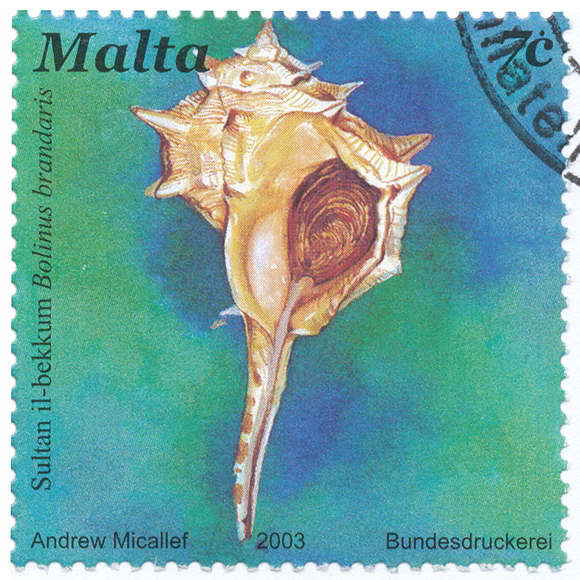
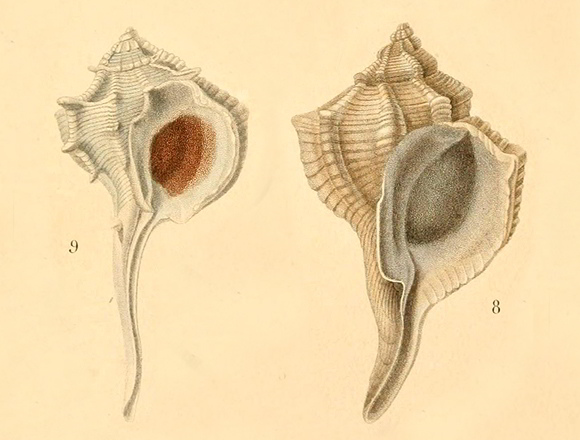
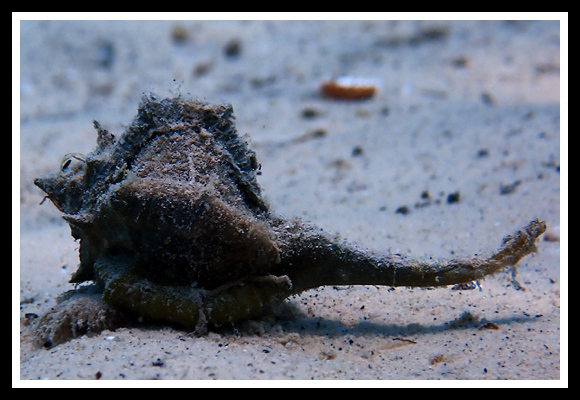
12m deep, on sand, Prapatno bay, southern coast of Pelješac peninsula, Dubrovnik-Neretva Comitat, S. Croatia.
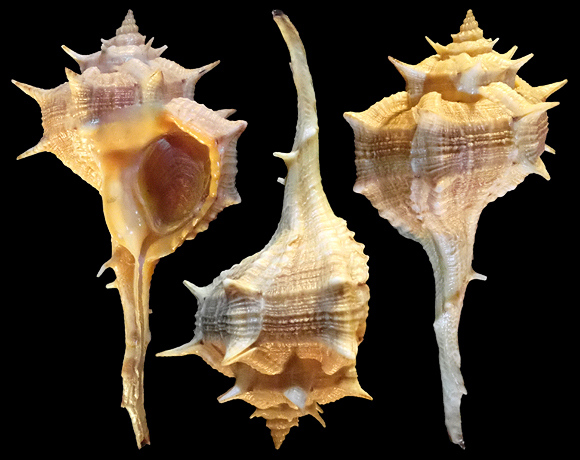
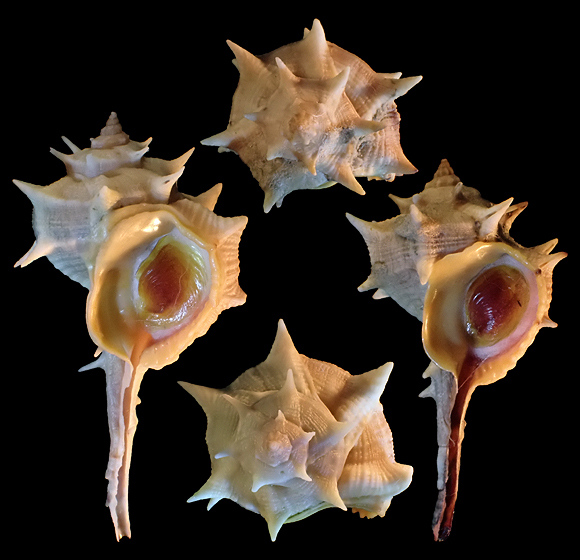
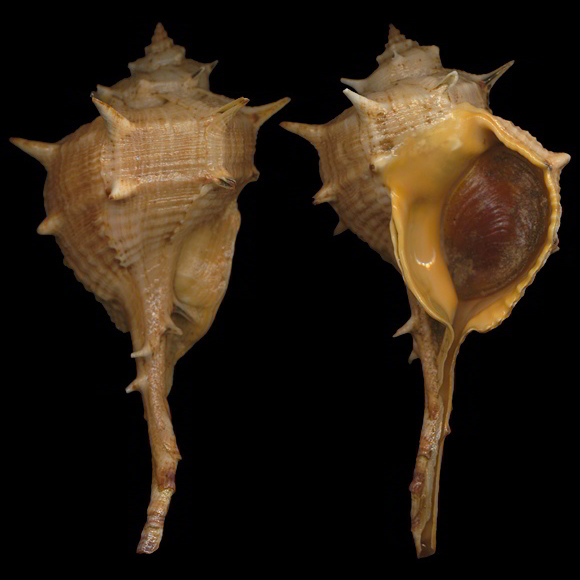
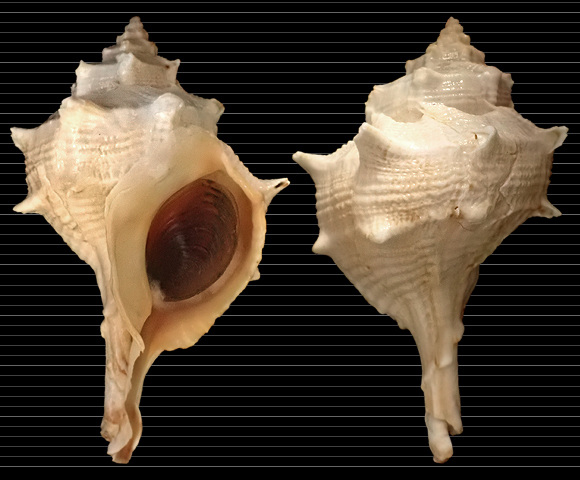
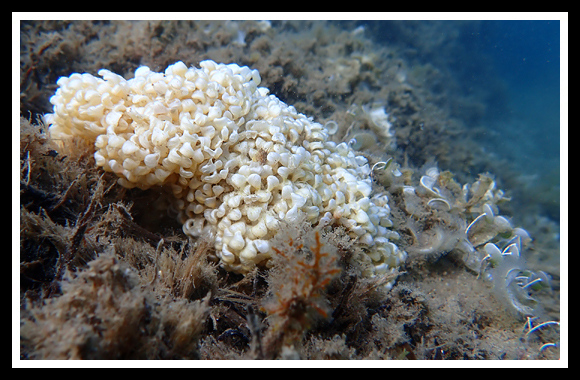
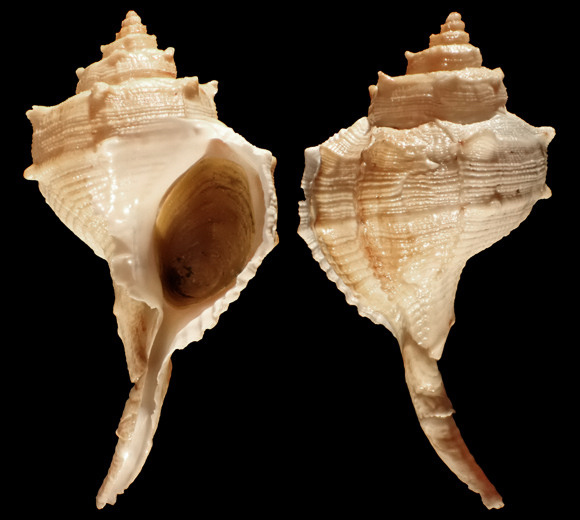
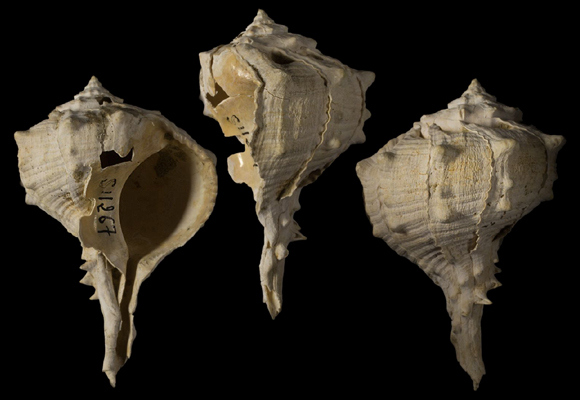
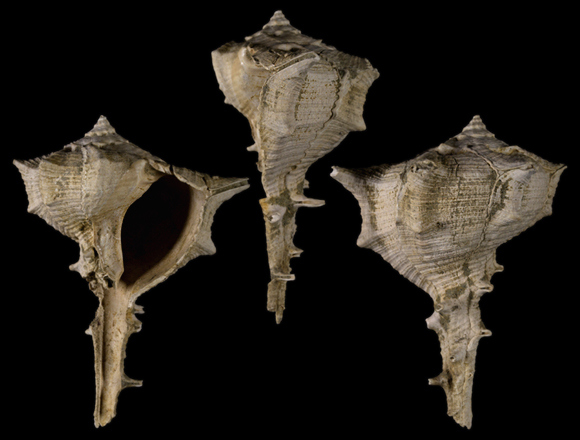
Bolinus brandaris torularius (Lamarck, 1822), characterized by its very depressed spire. 59mm. Miocene of Montpeyroux, Hérault, S. France. Original pictures provided by J. Falconnet for the MNHN Paris – (CC BY).
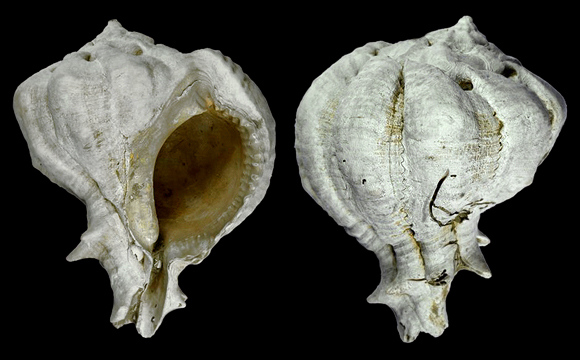
Original pictures provided by W. Fischer (AT).
– (CC BY-NC-SA) –